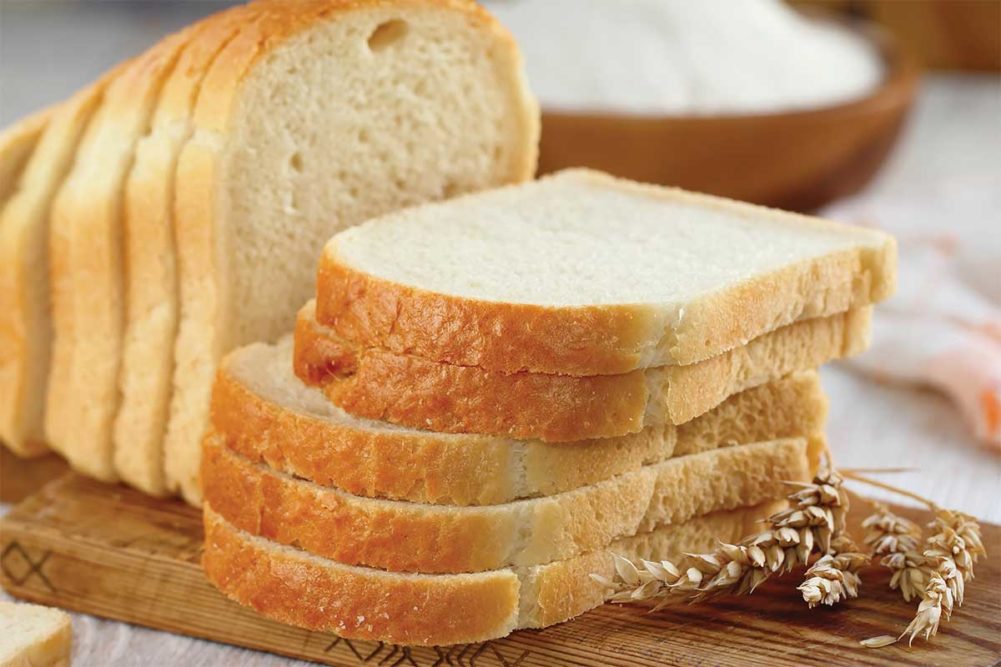The formulation for white sandwich bread is a straightforward example to demonstrate how flour’s protein content impacts the finished product. Bakers generally experience success with flour protein ranges between 10% and 11.5%.
“If the protein content is too high, the bread will be too dense and chewy,” said Josh Reasoner, milling technical service manager, ADM. “Inversely, if the protein level is too low, it will affect the volume and the bread’s internal crumb.”
It’s become quite common for bread bakers to experiment with the addition of grains, nuts, seeds, fruits and fiber additives. Any extras place a burden on the strength characteristics of the flour.
“The clean label movement, as well as the prevalence of organic baking, has eliminated many of the traditional dough strengthening and oxidizing conditioners used in commercial bread making,” said Dave Kovacic, technical service, Bay State Milling. “The inclusion of other non-gluten forming grains and seeds, fiber additives, as well as whole wheat flour, places an additional burden on the strength characteristics of the flour. Even so, bakers still expect the flour to perform in a similar manner. Now, more than ever, wheat flour needs to be considered a key functional ingredient and not a commodity.”
Artisan loaves with their hearty density and open volume often feature these extra grains.
“Adding ancient grains, depending on which grain and how finely they are milled, might have an undesired effect on the gluten structure of the dough,” Mr. Reasoner said.
Bran, for example, might have a sharp edge that cuts into the gluten matrix and weakens the structure. Using a high-protein flour, in the range of 12.5% to 14% protein content, may also assist with building desirable structure and retaining volume after baking. When blending grains for multigrain breads, all-purpose flour may work well as the base, as long as the other grain flours contribute protein as well as fiber for strengthening the dough.
The American Association of Cereal Chemists has approved methods for determining various properties of flour that impact performance, and thus are considered indicators of quality. This includes quantification tests for ash, moisture and protein content. In the experience of Scott Baker, principal scientist at The Annex by Ardent Mills, the bake test remains the best identifier for finished product quality and to evaluate flours for performance needs.
In addition to the variations among wheat crops, there are other quality measurements critical to product success. Falling number (FN), for example, is a wheat quality test that measures alpha amylase activity in flour. Alpha amylase is an enzyme found in sprout-damaged wheat. The FN is the time in seconds for a stirrer to fall through a hot slurry of ground wheat. The lower the number, the higher the enzyme activity, which means the more starch that has been converted into sugar. Starch supports structure in many baked foods. Starch degradation results in an inferior product.
“For bread quality, a low FN flour results in sticky dough, darker colors, coarser crumb, and a sticky and gummy bread texture,” said Edward Usset, grain marketing economist, Center for Farm Financial Management, University of Minnesota. “For pasta and noodles made with low FN flour, the resulting product is fragile, soft and mushy.”
The FN can be influenced by starch structure, starch degradation, other non-starch polysaccharides and protein. The US Department of Agriculture Wheat Quality Lab states that an FN greater than 300 is indicative of no sprout damage. A measure between 200 and 300 indicates some sprouting, with less than 200 suggestive of severe wheat damage.
The two main causes of low FN are preharvest sprouting, which happens through the initiation of germination by cool, rainy conditions after the wheat turns from green to gold, and late-maturity alpha amylase, which is the result of large temperature increases or decreases during grain maturation.
This article is an excerpt from the August 2021 issue of Baking & Snack. To read the entire feature on Flour, click here.






